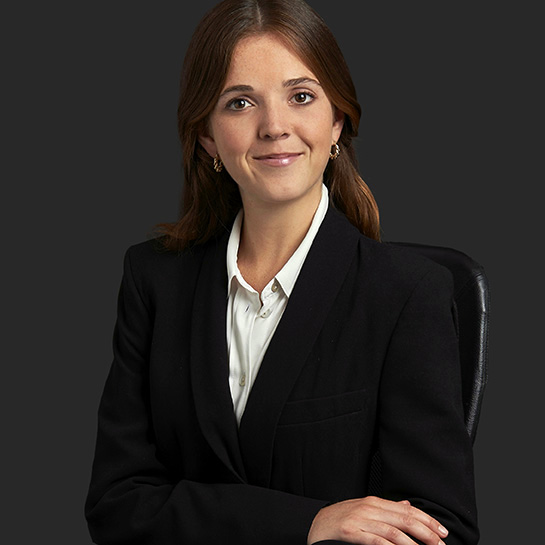
Satisfying the Appendix FM Partner Visa Financial Requirement Based on Employment Income (Part 2)

In This Article
1. Understanding Category B Employment Income Under Appendix FM
In Part 1 of this comprehensive guide to the Appendix FM Partner and Family Visa financial requirement, we delved into the evidential standards that must be met by applicants relying on Category A employment income – that is where the individual has been working with their employer for 6 months or more.
In Part 2, we look at the Home Office requirements where an individual has been working with their current employer for less than 6 months, or has a variable income, known as Category B income.
2. When Does Employment Income Fall under Category B?
An individual may have recently switched jobs and only have a few months worth of payslips. Alternatively, they may have been earning a variable income, such that the amount they wish to rely on in support of their application has been earned for less than six months.
High earners may be able to meet the minimum income threshold in less than six months and wish to be considered under Category B instead.
3. Important Note on Combining Income Categories
It is worth noting that where an applicant wishes to rely on their own employment income (when they are in the UK with permission to work) as well as their partner’s, the employment and non-employment income of both parties must be calculated under Category A or B. The categories cannot be used in combination, as explained in the Home Office guidance on Appendix FM and Appendix HM Armed Forces: minimum income requirement (Version 12.0) with examples.
4. Appendix FM Financial Requirement for Partner and Family Visas (2024 Update)
Following the changes to the minimum income thresholds which came into force on 11 April 2024, the financial requirements under Appendix FM read as follows:
E-LTRP.3.1. The applicant must provide specified evidence, from the sources listed in paragraph E-LTRP.3.2., of:
(a) a specified gross annual income of at least £29,000
(b) specified savings of:
(i) £16,000; and
(ii) additional savings of an amount equivalent to 2.5 times the amount which is the difference between the gross annual income from the sources listed in paragraph E-LTRP.3.2.(a)-(f) and the total amount required under paragraph E-LTRP.3.1.(a); or
(c) the requirements in paragraph E-LTRP.3.3. being met, unless paragraph EX.1. applies.
E-LTRP.3.2. When determining whether the financial requirement in paragraph E-LTRP. 3.1 or E-LTRP.3.7. is met only the following sources may be taken into account-
(a) income of the partner from specified employment or self-employment;
(b) income of the applicant from specified employment or self-employment unless they are working illegally;
Note that for entry clearance applications, under E-ECP.3.2 only a partner’s employment income, including specified employment or self-employment overseas, may be relied on. For example, a couple applying from the US to enter the UK can only rely on the British citizen partner’s (the sponsor’s) salary to meet the requirement.
5. Policy Context: Changes to Minimum Income Thresholds
The previous government unveiled a series of significant measures with the aim of curbing legal migration numbers to the UK by around 300,000, including an increase to the minimum income threshold for family visas to £29,000 from 11 April 2024. The new Labour government put any further increases on hold pending the outcome of a review by the Migration Advisory Committee, which recommended no further increases. It remains to be seen how the Government chooses to respond.
6. Financial Evidence Required for Category B Employment Income
Under Category B, paragraph 13(b) of Appendix FM-SE states that individuals must evidence their income in two parts:
- Gross Annual Salary at the Date of Application;
- The actual amount of gross annual income received in the 12 months prior to the application.
Under paragraph 13(b)(i), the gross annual salary of the individual at the date the application is submitted can count towards the financial requirement. There is no minimum period of time so you can rely on it once you have the relevant evidence, like your first payslip.
As explained in the Home Office’s Guidance: on the Appendix FM Financial Requirement, both salaried and non-salaried employment can be relied upon.
7. Definition: Salaried vs Non-Salaried Employment Under Category B
Salaried employment means employment paid at a minimum fixed rate (usually annual) and is subject usually to a contractual minimum number of hours to be worked. Non-salaried employment includes that paid at an hourly or other rate, where the number and/or pattern of hours worked varies, or an amount is paid according to the work undertaken. The only difference between relying on each under Category B will be in the way the gross annual salary is calculated:
- For salaried employment, the level of gross annual salary will be as at the date of application. This must be evidenced by the latest payslip or the signed contract of employment (if a payslip does not provide this information).
- For non-salaried employment, the level of gross annual salary relied upon can be no greater than the annual equivalent of the person’s average gross monthly income.
Category B Example: Salaried Income
An example of a Category B application using salaried income might be an individual whose partner works in the UK and switched to a new job 4 months ago, where her gross annual salary is £36,000. Prior to this, she worked at another job for 8 months where her salary was £28,500. Thanks to Category B, she does not need to worry about not having worked at her new job for 6 months or more before her partner can apply for leave to remain. By being in salaried employment at the date of the application with a gross annual salary of £36,000, she will meet the financial requirement under the calculation in Part 1 of the Category B application. She will also meet Part 2 of the Category B calculation, since:
- Actual income earned in 8 months at her old job = (28,500 ÷ 12) x 8 = £19,000
- Actual income earned in 4 months at her new job = (£36,000 ÷ 12) x 4 = £12,000
So the total actual income earned in the last 12 months is = £19,000 + £12,000 = £31,000. Therefore, although she would not have met the financial requirement under her old income, now she can.
Category B Example: Non-Salaried Income
An example of the Category B calculation using non-salaried income might be an individual who lives in the UK and works as a video editor on short-term contracts for various agencies, so their monthly income varies from month to month. In the last six months, their monthly earnings are as follows: £1500, £2800, £0, £3700, £1800, £2200. Their actual employment income over the last 12 months is £30,000.
Under Part 1 of the Category B assessment, their current annual employment income is:
((£4500 + £3800 + £0 + £3700 + £1800 + £4200) ÷ 6) x 12
= (£18,000 ÷ 6) x 12
= £36,000
As their actual employment income over the last 12 months under Part 2 of the Category B assessment is £30,000, both parts are met.
8. Combining Category B with Other Income Sources
If the gross annual income does not quite meet the minimum income threshold, it can be combined with either:
- Non-employment income (Category C) received by the applicant’s partner, the applicant, or both jointly in the 12 months prior to the application, as long as they continue to own the relevant asset (e.g. rental income from a house, interest from shares).
- Cash savings (Category D) above £16,000 held by the applicant’s partner, applicant or both jointly for a continuous period of 6 months prior to the Application and under their control. Note that for applications for entry clearance/initial leave to remain and further leave to remain, this amount above £16,000 will be divided by 2.5 (to reflect the 2.5 years or 30 month period before the individual will have to reapply). At the indefinite leave to remain application stage, the full amount above £16,000 can be added to income.
- Pension (Category E) – the gross annual income from any State (UK or foreign), occupational or private pension received by the applicant or their partner.
For a thorough exploration on how to combine sources of income in Appendix FM applications, see our article on Combining Sources of Income to Meet the Family & Partner Visa Financial Requirement.
9. Actual Income Received in the Last 12 Months
As well as the gross annual salary at the date of the application, an applicant must demonstrate that their actual gross annual income received in the last 12 months exceeds the minimum income threshold. This income is calculated using the following sources (paragraph 15(b)):
- The gross income from salaried employment in the UK or overseas earned by the person in the 12 months prior to the date of application;
- The gross amount of any specified non-employment income (other than pension income) received by the person or their partner in the 12 months prior to the date of application;
- The gross amount received from a UK or foreign State pension or a private pension by the person or their partner in the 12 months prior to the date of application.
Importantly, whilst these three sources can be combined to meet the minimum income threshold, paragraph 15(b)(iv) provides that cash savings (Category D) cannot be used in combination with these to meet the threshold.
Remember that both these pieces of evidence must be provided, and must additionally meet the specified evidence requirements under paragraph 2 of Appendix FM-SE.
10. Category B Specified Evidence Requirements
Under paragraph A1 of Appendix FM-SE, to meet the financial requirements of Appendix FM, an applicant must satisfy:
(a) The level of financial requirement applicable to the application under Appendix FM; and
(b) The requirements specified in Appendix FM and this Appendix as to:
(i) The permitted sources of income and savings;
(ii) The time periods and permitted combinations of sources applicable to each permitted source relied upon; and
(iii) The evidence required for each permitted source relied upon.
The specified evidence requirements when relying on employment income are outlined in paragraph 2 of Appendix FM-SE. For a detailed explanation of these, please refer to Part 1 of this article.
11. Category B Applications When the Sponsor Is Outside the UK
As noted above, in an application for entry clearance an applicant cannot rely on their own employment income to meet the financial requirements under paragraph E-ECP.3.2 of Appendix FM, only on their sponsors. Where the sponsor wishes to be considered under Category B but is outside the UK, they do not have to already be in UK employment on the date the application is submitted.
12. Proving Future Employment for Sponsors Returning to the UK
The first part of Category B can be proved with a confirmed offer of salaried or non-salaried employment starting within three months of their return to the UK.
The specified evidence requirements under paragraph 4 of Appendix FM-SE read as follows:
In respect of a job offer in the UK (for an applicant’s partner or parent’s partner returning to salaried employment in the UK at paragraphs E-ECP.3.2.(a) and E-ECC.2.2.(a) of Appendix FM) a letter from the employer must be provided:
(a) confirming the job offer, the gross annual salary and the starting date of the employment which must be within 3 months of the applicant’s partner’s return to the UK; or
(b) enclosing a signed contract of employment, which must have a starting date within 3 months of the applicant’s partner’s return to the UK.
If the employment is salaried, it must have a confirmed gross annual salary. If non-salaried, the gross annual income from that employment will instead be calculated based on the rate or amount of pay, and the standard or core hours of work, set out in the document(s) from the employer provided under paragraph 4 (paragraph 18(g)).
This gross annual income may again be combined with non-employment income (Category C), cash savings (Category D) and pension income (Category E).
13. Overseas Sponsors: Meeting the 12-Month Income Requirement
The second part of Category B – the actual income received in the last 12 months – will be calculated in the same manner as above by combining any overseas income from salaried or non-salaried employment, non-employment income and pension income, but not cash savings.
For example, the applicant’s partner is a British citizen who left his job in India 1 month ago to prepare for his move to the UK with his partner. He is therefore not employed at the time of the application. However, he has a confirmed offer of employment starting within 5 weeks of his intended date of return to the UK with an annual starting salary of £35,000. Part 1 of the Category B assessment is therefore met.
Additionally, he received £30,000 from his employment in the 12 months prior to the application. Part 2 of the Category B calculation is therefore met.
14. Contact Our Immigration Barristers
If you’re unsure whether your income qualifies under Category B or need advice on meeting the financial requirement for a UK Partner or Family Visa, then please contact our specialist immigration barristers on 0203 617 9173 or via the enquiry form below.
15. Frequently Asked Questions
Can I combine Category A and Category B income in my application?
No. If an applicant is relying on employment income from both themselves and their partner, the income of both parties must be assessed under either Category A or Category B, but not a combination of the two.
What is Category B income under Appendix FM?
Category B applies where the individual has been employed for less than six months with their current employer or where their income is variable. It allows applicants to meet the financial requirement based on their current salary and their actual income over the past 12 months.
What is the minimum income threshold under Appendix FM?
As of 11 April 2024, the gross annual income required is at least £29,000, unless relying on savings or other permitted sources.
How do I calculate my income if I have a new job?
If you are in salaried employment and have recently changed jobs, your gross annual salary at the date of application can be counted. You must also show that your actual income earned in the last 12 months meets or exceeds the financial requirement.
What if I have a variable monthly income?
If your employment is non-salaried, your gross annual income is based on the monthly average of your earnings over the past six months, multiplied by 12. You must also show that your total income over the past 12 months meets the minimum threshold.
Can savings be combined with Category B income?
Yes. If your income does not meet the financial requirement on its own, you may combine it with:
- Non-employment income (Category C),
- Cash savings above £16,000 (Category D), or
- Pension income (Category E).
However, cash savings cannot be combined with income from salaried, non-salaried or pension sources to meet Part 2 of the Category B requirement.
Can I rely on my partner’s income if they’re currently outside the UK?
Yes. The sponsor does not need to be in employment in the UK already on the date of application, but they must have a confirmed offer of salaried or non-salaried employment in the UK starting within three months of their return.
Please note that the information provided in this article is for general guidance only and is based on the immigration rules and policies in force at the date of publication. Immigration law and Home Office policy can change frequently, and requirements may vary depending on individual circumstances. Legal advice should always be sought in relation to your specific situation.







